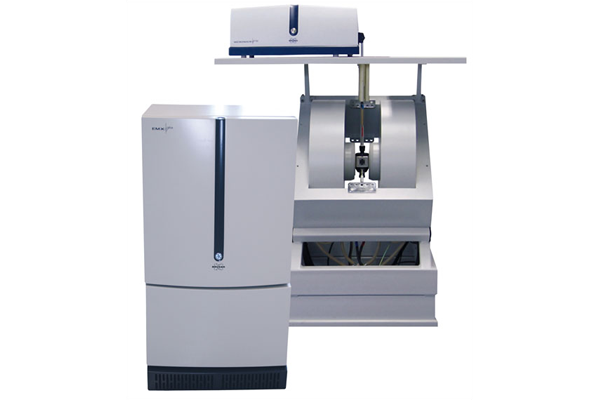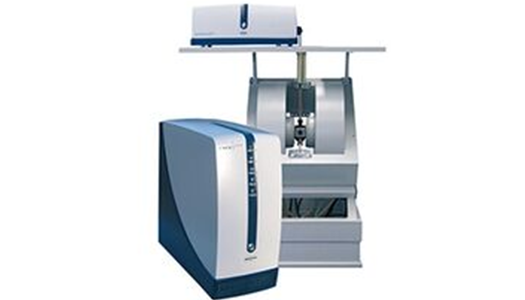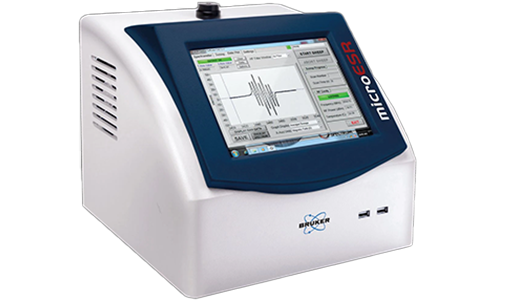- الرئيسية
-
الخدمات والمنتجات
Instruments
- + Chromatography
- + Mass Spectrometry
- + Sample Preparation
- + Titration
- + Electrochemistry
- + Ion Analysis
- + TOC Analyzer
-
+ Spectroscopy
- Atomic Absorption
- Spectrometers
- MP-AES
- ICP-OES
- ICP-MS
- Microwave Digestion
- Microwave Ashing
- Microwave Synthesis
- Clean Chemistry
- UV-Vis & UV-Vis-NIR
- Fluorescence Spectrometry
- Uv-Vis/NIR and RAMAN Microspectrometer
- Fluorescence Spectrometry
- Uv-Vis/NIR and RAMAN Microspectrometer
- FTIR
- Raman Spectroscopy
- Raman Spectroscopy
- LDIR Imaging
- High-tech particle sizing
- X-ray Fluorescence (XRF)
- X-ray Diffraction (XRD) and Scattering
- 3D X-ray Microscopy for Material Science
- Single Crystal X-ray Diffraction
- Nuclear Magnetic Resonance
- Electron Paramagnetic Resonance
- Preclinical MRI
- Nuclear Molecular Imaging
- Magnetic Particle Imaging (MPI)
- Micro-CT for Life Science
- + Elemental Analysis
- + Physical Properties
- + Weighing Solutions
- + Lab water systems
- + LifeScience
- + Vaccum Products
- + Pyrolyzers
Consumables
- العملاء
- الشركاء
- من نحن
- تواصل معنا
English
Electron Paramagnetic Resonance
Electron Paramagnetic Resonance
EPR is a non-destructive analytical technique and is the only method available for the direct detection of paramagnetic species. Free radicals and transition metal ions can be identified and quantified in solids, liquids, gases, cells, and in vivo. Structural insights from the chemical structure to intermolecular interactions are obtained from both CW and PulseEPR techniques (ESEEM, ENDOR, DEER, Relaxation, and Simulation).
Request Info/QuoteHighlight of the Product Offering
EMXplus
Embodying a new EPR philosophy
The EMXplus™ is the next generation of the successful Bruker EMX spectrometer line embodying Bruker’s innovative EPR analysis philosophy. The EMX is well-known for its premium performance in routine EPR research. The new design of the EMXplus™ reflects Bruker's dedication to the heart of an EPR spectrometer’s purpose: the analysis of the sample. Simply switch on the EMXplus™ to start your EPR endeavour.

EMXmicro
Decreased size, increased performance
With the EMXmicro, Bruker presents a new compact Continuous Wave spectrometer (CW-EPR) with a footprint as small as a tower PC and increased EPR performance in magnetic field and signal resolution. The EMXmicro represents a new digital generation of CW-EPR spectrometers: It is a highly integrated digital spectrometer featuring field controller and signal processor with unsurpassed resolution and precision. Being a micro spectrometer, the EMXmicro frees lab space by integrating these devices plus an optional temperature controller in the footprint of a tower PC.

microESR: The Portable Research-Grade Instrument
The microESR is a small, portable research grade instrument. The spectrometer has a mass of only 10 kg and a 30.5 x 30.5 x 30.5 cm3 foot print. It can easily fit in a fume hood or glove box, or be transported to the field. It requires no special installation or regular maintenance.

